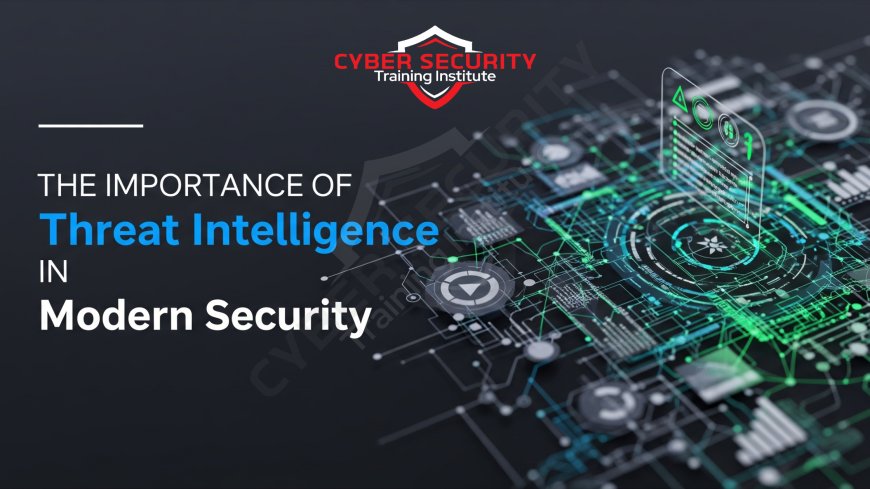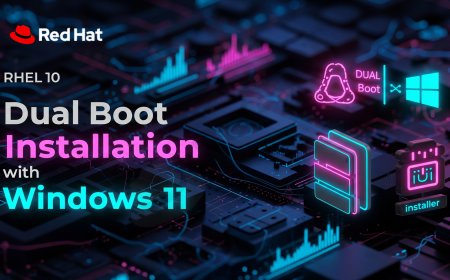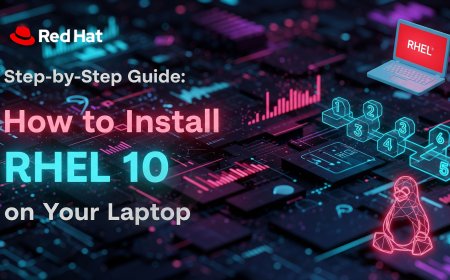The Importance of Threat Intelligence in Modern Security
In the modern threat landscape, fighting blind is a losing strategy. This in-depth article explains the critical importance of threat intelligence, the contextualized knowledge that transforms a security program from a reactive to a proactive force. We break down the fundamental difference between raw, noisy data and true, actionable intelligence, and explore the classic "Pyramid of Pain" to show how intelligence helps defenders focus on what really matters. Discover the three key levels of intelligence—Tactical, Operational, and Strategic—and how each serves a different, vital function within a business, from automatically blocking threats at the firewall to informing executive-level strategic decisions. The piece features a comparative analysis of who consumes each level of intelligence and the critical business and security decisions it enables. We also provide a focused look at the essential role threat intelligence plays in the modern Security Operations Center (SOC), acting as the brain that filters out the noise and cures the chronic problem of "alert fatigue." This is an essential read for any business or security leader who wants to understand how a data-driven, intelligence-led approach is no longer a luxury but a non-negotiable requirement for effective modern cybersecurity.

Introduction: Fighting Smart, Not Just Hard
Imagine trying to play a high-stakes chess match where you can't see your opponent or any of their pieces. You can only see where your own pieces are being captured, one by one. For a long time, this is what cybersecurity felt like. We built our defenses and then waited for an attack to hit, reacting to the damage after the fact. This reactive posture is no longer a viable strategy. The solution to this blindness is threat intelligence. At its core, threat intelligence is the processed, contextualized knowledge about adversaries and their methods that allows you to finally see the other side of the board. The importance of threat intelligence in modern security is that it transforms an organization's posture from passively waiting for an attack to proactively understanding the adversary, allowing them to prioritize their defenses, shorten their response times, and make strategic, risk-based decisions.
The Pyramid of Pain: Moving Beyond Simple Indicators
One of the best ways to understand the value of good threat intelligence is through a concept known as the "Pyramid of Pain." This pyramid illustrates the different types of indicators a defender can use to detect an attacker, and how "painful" it is for an attacker to have that indicator taken away from them.
- The Bottom of the Pyramid (Easy for Attackers to Change): At the very bottom are simple Indicators of Compromise (IOCs) like file hashes and IP addresses. A traditional security approach focused heavily on blocking these. The problem is that it causes almost no pain for an attacker to change them. If you block their IP address, they can just use another one.
- The Middle of the Pyramid (Harder to Change): Moving up, we have things like the attacker's domain names and the specific tools they use. It's more difficult and costly for an attacker to change these.
- The Top of the Pyramid (Hardest to Change): At the very top of the pyramid are the attacker's Tactics, Techniques, and Procedures (TTPs). This is their fundamental behavior—how they think, how they move through a network, how they achieve their goals. It is extremely difficult for an attacker to change their core TTPs.
Good threat intelligence helps a security team move their defenses up the Pyramid of Pain. Instead of just blocking today's IP address, it helps them understand and detect the attacker's core TTPs. A defense based on detecting behavior is far more durable and effective than one based on simple, fleeting indicators. .
From Alerts to Incidents: The Power of Context
A modern Security Operations Center (SOC) is drowning in a sea of alerts. A single security tool can generate tens of thousands of alerts in a single day, and most of them are benign "false positives." A human analyst cannot possibly investigate all of them. The primary role of threat intelligence is to provide the critical context that allows an analyst to instantly see which alerts actually matter.
A threat intelligence platform acts as a powerful, automated enrichment engine. When an alert fires in a security tool, it is instantly cross-referenced with the intelligence platform. The effect is transformative:
- Before Intel: The security tool generates a low-priority alert: "Suspicious login to Server A from IP address 1.2.3.4." An overwhelmed analyst might ignore this.
- After Intel: The threat intelligence platform enriches the alert in real-time: "Suspicious login to Server A from IP address 1.2.3.4. Warning: This IP is a known Command and Control server for the FIN7 ransomware group, which is currently running an active campaign against companies in your industry."
The intelligence instantly transforms a single, low-priority alert into a high-priority, actionable incident. It allows the SOC to see the signal through the noise and to respond immediately to the threats that pose a genuine danger, drastically shortening the time to detect a real breach.
Driving a Risk-Based Security Program
Threat intelligence is not just for the SOC analysts; it is a critical tool for informing a high-level, risk-based security program. It allows an organization's leadership to make smarter, more efficient decisions about how to allocate their limited security resources.
- Prioritizing Vulnerability Management: A typical large company has thousands or even tens of thousands of known vulnerabilities across its vast network of systems. It is impossible to patch all of them immediately. A good threat intelligence feed provides the necessary context to prioritize. It can tell the vulnerability management team, "Of your 10,000 vulnerabilities, these 20 are being actively exploited in the wild right now by groups that are known to target companies like ours." This allows the team to move from a chaotic "patch everything" model to a much more effective and risk-based "patch what matters most first" model.
- Informing Strategic Investment: Strategic threat intelligence reports, which cover broad trends and adversary motivations, are invaluable for a Chief Information Security Officer (CISO). If the intelligence shows a major, sustained rise in attacks against cloud infrastructure in their specific industry, the CISO has a clear, data-driven case to present to the board for a larger investment in new cloud security tools and training. It allows security strategy to be driven by data, not by fear or guesswork.
Comparative Analysis: Who Uses Threat Intel and Why?
Different types of threat intelligence are consumed by different parts of the security organization to enable a wide range of decisions, from automated, real-time blocking to long-term strategic planning.
| Consumer | Type of Intelligence Used | Decision Enabled |
|---|---|---|
| Firewall / Automated Security Tools | Tactical Intelligence. Real-time, machine-readable feeds of Indicators of Compromise (IOCs). | An automated, real-time decision: "Should I block this IP address or this file hash right now?" |
| SOC Analyst (Tier 1/2) | Operational Intelligence. Reports on threat actor TTPs, active campaigns, and enriched alert data. | A human-driven, investigative decision: "Is this alert part of a known campaign? How should I investigate it to understand its scope?" |
| Threat Hunter | Operational and Strategic Intelligence. Deep knowledge of adversary TTPs, emerging threats, and common attack paths. | A proactive, human-driven decision: "What new or stealthy attack techniques should I be proactively searching for in our network today?" |
| CISO & Executive Leadership | Strategic Intelligence. High-level briefings on the threat landscape, the motivations of different threat actors, and the risks to their specific industry. | A long-term, business-focused decision: "Where should we invest our limited security budget for the next year to best reduce our overall risk?" |
Conclusion: The Foundation of Proactive Defense
In today's complex and fast-moving threat landscape, operating without threat intelligence is not an option. It has become a non-negotiable, critical component of any mature cybersecurity program. Its core value is its ability to provide context. It allows an organization to finally understand the "who, what, where, when, how, and why" behind the constant stream of attacks they face. This understanding is what enables the fundamental and necessary shift from a passive, reactive security posture—where you are always one step behind the attacker—to a proactive and predictive one, where your defensive decisions are driven by data and insight.
You cannot defend against an enemy you do not understand. Threat intelligence, in all its forms—from the tactical to the strategic—is the foundational discipline that provides that critical understanding and allows you to fight smarter, not just harder.
Frequently Asked Questions
What is threat intelligence?
Threat intelligence is evidence-based knowledge, including context, mechanisms, indicators, and actionable advice, about an existing or emerging threat. It is used to inform security decisions.
What is the difference between data and intelligence?
Data is a raw, uncontextualized fact (like an IP address). Intelligence is that data after it has been processed and analyzed to provide context and make it actionable (e.g., "that IP address belongs to a specific hacking group").
What are IOCs and TTPs?
IOCs (Indicators of Compromise) are the static "fingerprints" of an attack (e.g., a malware hash). TTPs (Tactics, Techniques, and Procedures) describe the *behavior* of an attacker (e.g., how they move through a network).
What is the Pyramid of Pain?
It is a conceptual model in cybersecurity that ranks the types of indicators a defender can use. The indicators at the bottom (like hashes) are easy for an attacker to change, while the ones at the top (like TTPs) are much harder, making them more effective for defenders to focus on.
What is a CISO?
CISO stands for Chief Information Security Officer. This is the senior-level executive responsible for an organization's overall security strategy.
What is the intelligence lifecycle?
It is the continuous, six-step process by which raw data is turned into finished intelligence: Planning, Collection, Processing, Analysis, Dissemination, and Feedback.
What is the MITRE ATT&CK framework?
It is a globally accessible knowledge base and framework of adversary TTPs based on real-world observations. It is the "encyclopedia" of attacker behaviors.
How is AI used in threat intelligence?
AI is used to automate the intelligence lifecycle. It can ingest and process massive amounts of unstructured data (like blogs) at a speed no human could match, and it can help to correlate and analyze the data to find hidden patterns.
What is a "threat actor"?
A threat actor is the person or group responsible for a threat. This can range from an individual hacktivist to a large, state-sponsored cyber espionage group.
What is OSINT?
OSINT, or Open-Source Intelligence, is intelligence that is gathered from publicly available sources, such as social media, news reports, and security blogs.
What is the dark web?
The dark web is a part of the internet that requires special software to access and where users are largely anonymous. It is a key source of threat intelligence, as it is where criminals often discuss their tools and techniques.
What does it mean for intelligence to be "actionable"?
Actionable intelligence is information that an organization can use to take a direct, concrete defensive action. For example, a list of malicious IP addresses is actionable because it can be immediately added to a firewall's blocklist.
What is a Security Operations Center (SOC)?
A SOC is the centralized team responsible for an organization's security monitoring. They are the primary consumers of operational and tactical threat intelligence.
What does it mean to "enrich" an alert?
Enrichment is the process of automatically adding context to a security alert. A threat intelligence platform will enrich an alert by adding information about the IP address, the file hash, etc., to tell the analyst what they are looking at.
What is a SIEM?
A SIEM (Security Information and Event Management) tool is the central log collection and analysis platform for a SOC. It is often the main hub where threat intelligence is correlated with internal log data.
What is "alert fatigue"?
Alert fatigue is the state of being overwhelmed by the sheer volume of security alerts, which can lead to human analysts missing or ignoring the few alerts that are truly important. Threat intelligence helps to reduce this.
What is an ISAC?
An ISAC, or Information Sharing and Analysis Center, is an organization that facilitates the sharing of threat intelligence among the members of a specific industry, such as the financial services industry.
What is a "threat hunt"?
Threat hunting is a proactive security exercise where an analyst, often starting with a hypothesis from an operational intelligence report, actively searches through their network and data to look for the signs of a hidden attacker.
Is threat intelligence just for large companies?
While large companies have dedicated teams, many modern security products for businesses of all sizes have threat intelligence feeds built directly into them, providing a level of automated protection.
What is the most important benefit of threat intelligence?
The most important benefit is that it allows a security team to be proactive. It lets them focus their limited time, money, and attention on defending against the threats that are most likely to target them, rather than trying to defend against everything at once.
What's Your Reaction?
 Like
0
Like
0
 Dislike
0
Dislike
0
 Love
0
Love
0
 Funny
0
Funny
0
 Angry
0
Angry
0
 Sad
0
Sad
0
 Wow
0
Wow
0







![How to Install RHEL 10 on VMware/VirtualBox [Tutorial]](https://www.cybersecurityinstitute.in/blog/uploads/images/202509/image_430x256_68b56dc967a4a.jpg)






